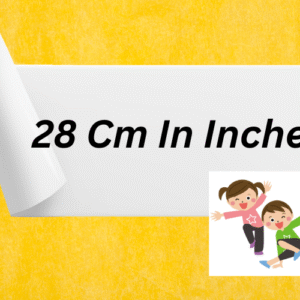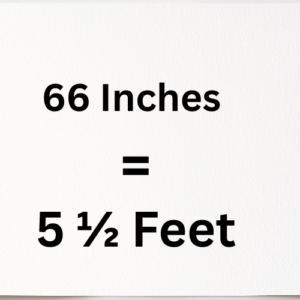The metric system, with its clean and logical base-10 structure, is a cornerstone of measurement worldwide. Among its units, the centimeter (cm) is a familiar and practical unit for measuring small lengths. But how big is 4 cm, really? For many, visualizing 4 cm can be challenging without context, especially in a world where measurements are often abstract until tied to tangible objects or experiences. This article dives deep into the concept of 4 cm, exploring its size through comparisons, practical applications, and real-world examples. By examining everyday items that measure approximately 4 cm, offering precise conversions, and providing visual aids like tables, we aim to make this small but significant measurement come to life. Whether you’re a student, a DIY enthusiast, or simply curious, this guide will help you grasp the scale of 4 cm in a relatable and meaningful way.
What Is a Centimeter?
Before delving into the specifics of 4 cm, it’s worth understanding the centimeter itself. A centimeter is a unit of length in the metric system, equal to one-hundredth of a meter. It’s abbreviated as “cm” and is widely used globally for measuring small distances, from the length of a pencil to the width of a book. To put it in perspective:
- 1 cm = 10 millimeters (mm)
- 100 cm = 1 meter (m)
- 1 cm ≈ 0.3937 inches
Thus, 4 cm equals 40 mm or approximately 1.574 inches. This small length is often encountered in everyday life, but its scale can be hard to visualize without context. To make 4 cm more tangible, let’s explore its size through comparisons and practical examples.
Practical Applications of 4 cm
The measurement of 4 cm appears in many contexts, from science and engineering to daily life. Here are some examples:
- Medical Field: In medicine, 4 cm is a critical measurement. For instance, during childbirth, a cervix dilated to 4 cm marks the early stages of labor. In tumor sizing, a 4 cm mass is considered significant and may require further investigation.
- Engineering and Design: In product design, components like buttons, screws, or small parts are often around 4 cm for ergonomic reasons. For example, the diameter of a car’s gear shift knob might be close to 4 cm for comfortable gripping.
- Fashion and Textiles: In sewing, a 4 cm seam allowance is common for certain garments, providing enough fabric for adjustments. Jewelry, like pendants or earrings, often has elements measuring around 4 cm for aesthetic balance.
- Everyday Life: From the size of a keychain to the width of a smartphone’s camera module, 4 cm is a dimension that frequently appears in objects we handle daily.
To further contextualize 4 cm, let’s explore a table comparing it to other common measurements.
Comparing 4 cm to Other Units
| Unit | Equivalent to 4 cm | Notes |
| Millimeters (mm) | 40 mm | 1 cm = 10 mm |
| Inches | ~1.574 inches | Slightly longer than 1.5 inches |
| Feet | ~0.131 feet | A small fraction of a foot |
| Meters | 0.04 m | One twenty-fifth of a meter |
| Kilometers | 0.00004 km | Practically negligible at this scale |
This table illustrates how 4 cm fits into the broader spectrum of measurements, showing its relatively small but measurable size.
Why 4 cm Matters
The size of 4 cm is significant because it’s a scale that bridges the gap between the very small (like millimeters) and larger measurements (like meters). It’s a dimension that’s easy to measure with basic tools like a ruler or caliper, yet precise enough for detailed work. In fields like architecture, a 4 cm model piece might represent a much larger structure in a scaled-down blueprint. In biology, a 4 cm leaf or insect can be studied for its ecological role. Understanding 4 cm helps us appreciate the precision of the metric system and its role in standardizing measurements globally.
Now, let’s dive into the heart of this article: 10 everyday items that are approximately 4 cm in size. Each section below provides a detailed description of an item, its dimensions, and why it’s a useful reference for visualizing 4 cm.
10 Everyday Items That Are 4 cm Big
1. A Standard Paperclip (Straightened)
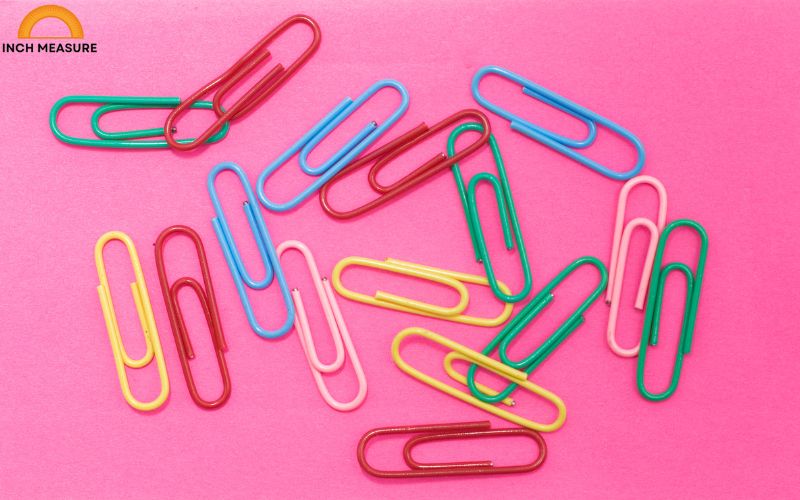
Paperclips are ubiquitous in offices and homes, used to hold sheets of paper together. When straightened, a standard large paperclip measures about 4 cm in length. This makes it an excellent reference for visualizing 4 cm.
Paperclips are typically made of steel wire, bent into a looped shape, but when uncoiled, their length is remarkably consistent. The straightened form is about 4 cm, though slight variations exist depending on the brand or size. For example, a jumbo paperclip might be slightly longer, but a standard one hits the 4 cm mark closely.
Why is this useful? Paperclips are small, portable, and easy to find. If you need to estimate 4 cm without a ruler, grab a paperclip, straighten it, and you’ve got a close approximation. This is particularly handy in settings like classrooms or offices where rulers might not be immediately available. Additionally, paperclips are lightweight and can be used as a makeshift measuring tool in a pinch, such as marking a 4 cm length on a piece of paper or fabric.
In practical applications, a 4 cm paperclip can be used in DIY projects, like creating a small hook or pin, or even in crafts like wire art. Its size is also relatable because it’s something you can hold between your fingers, giving a tactile sense of 4 cm. Next time you’re organizing papers, take a moment to straighten a paperclip and measure it—you’ll see how neatly it aligns with 4 cm.
2. A AA Battery (Length)
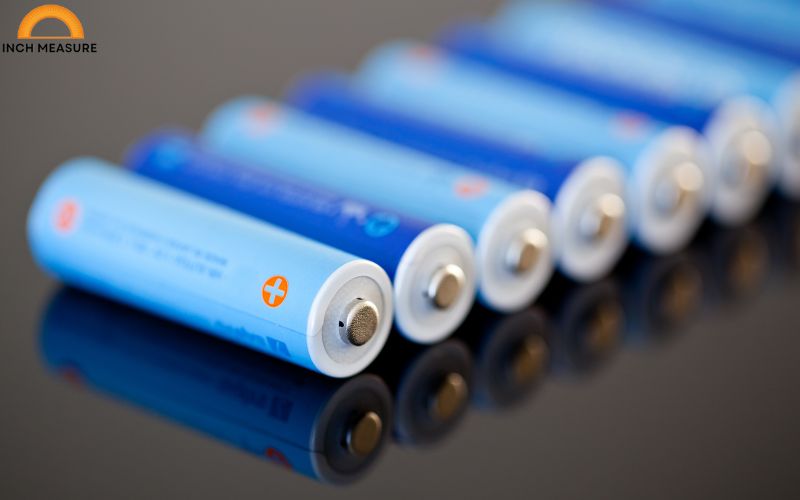
The AA battery is a common power source for devices like remote controls, flashlights, and toys. Measuring approximately 4 cm in length (actually closer to 5 cm, but the body excluding the positive terminal is near 4 cm), it’s a great everyday item for visualizing this size.
AA batteries are cylindrical, with a diameter of about 1.4 cm and a total length of 5.05 cm. However, if you focus on the main body (excluding the protruding positive terminal), it’s close to 4 cm. This makes it a practical reference, as AA batteries are found in nearly every household.
The AA battery’s size is significant because it’s designed for portability and ease of use. Its near-4 cm length makes it compact enough to fit into small devices while providing sufficient power. If you’re trying to visualize 4 cm, imagine holding an AA battery and focusing on its main body. It’s a length you can easily grip, making it a relatable comparison.
In everyday scenarios, you might encounter AA batteries when replacing them in a TV remote or a child’s toy. Their consistent size across brands makes them a reliable reference. For example, if you’re sketching a design and need a quick 4 cm measurement, an AA battery can serve as a rough guide. This item’s familiarity and availability make it an excellent tool for understanding 4 cm.
3. A Standard Teaspoon (Width of the Bowl)
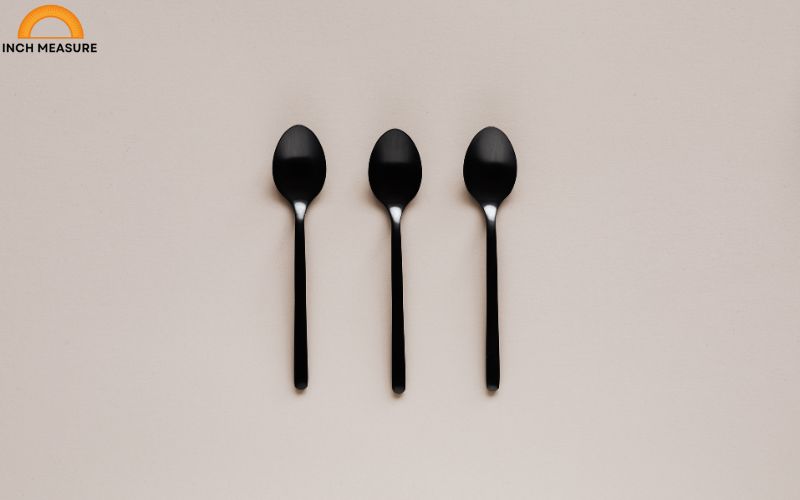
A teaspoon, found in every kitchen, is another excellent example of a 4 cm object. The bowl of a standard teaspoon—the part that holds liquid or ingredients—is typically about 4 cm wide.
Teaspoons vary slightly in design, but the bowl’s width is consistently around 4 cm in most standard sets. This makes it a handy reference for cooking, baking, or even casual estimation. The teaspoon’s bowl is designed to hold a specific volume (5 ml), and its width contributes to this functionality.
Why does this matter? Kitchens are places where precise measurements are crucial, but not everyone has a ruler handy. If you’re cutting dough or measuring fabric for a DIY project, a teaspoon can provide a quick 4 cm reference. Its curved shape also gives a visual cue: the widest part of the bowl is about 4 cm, which you can compare to other objects.
In practical use, a teaspoon’s 4 cm width can help with tasks like spacing decorations on a cake or estimating small lengths in crafts. Its universal presence in households makes it an accessible tool for visualizing 4 cm. Next time you’re in the kitchen, pick up a teaspoon and note the width of its bowl—it’s a perfect 4 cm example.
4. A USB Flash Drive (Width)
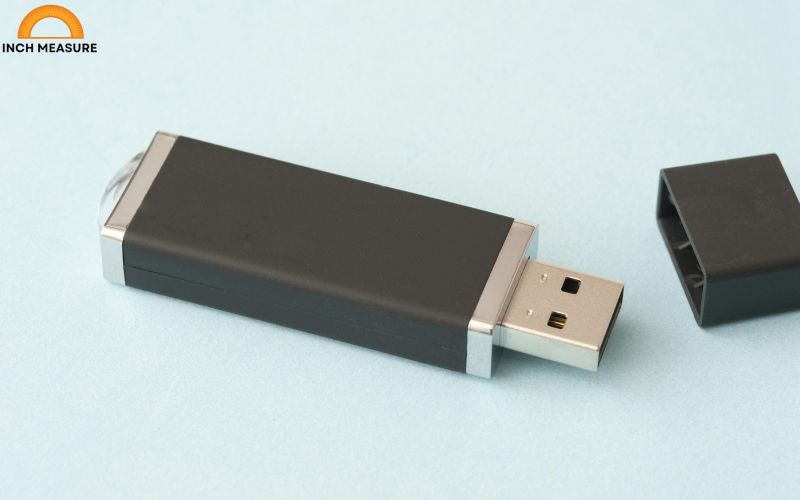
USB flash drives, used for data storage and transfer, are compact devices that often measure around 4 cm in width (excluding the protective cap or connector).
The body of a standard USB flash drive is designed to be small and portable, fitting easily into pockets or bags. A typical USB drive, like a SanDisk Cruzer or Kingston DataTraveler, has a width of about 4 cm, making it a great reference for this measurement. Some drives may be slightly longer or shorter, but 4 cm is a common dimension for the main body.
USB drives are relevant because they’re widely used in modern life, from transferring files to backing up data. Their 4 cm width is ergonomic, allowing easy handling without being too bulky. If you’re trying to picture 4 cm, imagine the width of a USB drive sitting on your desk—it’s a length you can easily visualize.
In practical terms, a USB drive’s size makes it a convenient reference for small measurements. For example, if you’re designing a tech accessory or organizing a workspace, the 4 cm width of a USB drive can help you estimate space requirements. Its compact size also makes it a relatable comparison for 4 cm, as it’s an object you likely encounter regularly.
5. A Standard Dice (Edge-to-Edge)
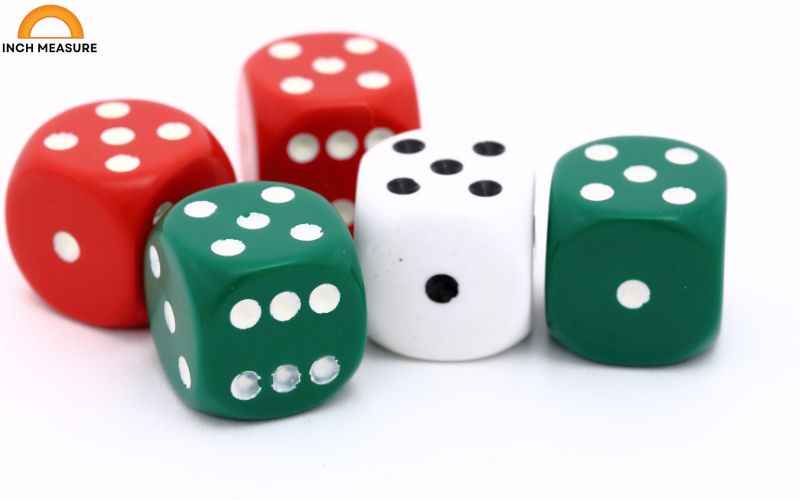
A standard six-sided die, used in board games and gambling, has an edge-to-edge length of about 4 cm in many larger sets, particularly those used in educational or oversized games.
While standard dice are often smaller (around 1.6 cm per side), larger dice used in classrooms or novelty games can have edges closer to 4 cm. This makes them a fun and relatable reference for visualizing 4 cm. The die’s cubic shape also provides a three-dimensional perspective on this measurement.
Dice are familiar to most people, whether from playing Monopoly, Yahtzee, or classroom math games. A 4 cm die is large enough to be easily handled but small enough to fit in your palm. If you’re trying to estimate 4 cm, imagine the length of one side of a large die—it’s a straightforward visual cue.
In practical applications, a 4 cm die can be used in educational settings to teach measurements or probability. Its size is also useful for estimating small lengths in games or crafts. For example, if you’re creating a board game prototype, a 4 cm die can help you gauge the size of other components. Its playful nature makes it an engaging way to understand 4 cm.
6. A Key (Blade Length)
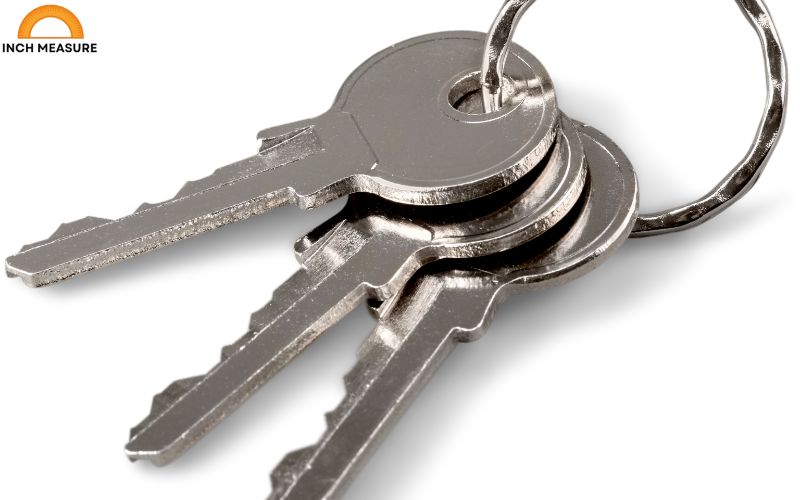
The blade of a standard house or car key—the part inserted into a lock—is often around 4 cm long, making it a perfect everyday reference for this measurement.
Keys vary in design, but the blade of a typical house or car key (excluding the handle or fob) is consistently about 4 cm. This length is designed for security and functionality, allowing the key to engage the lock’s mechanism effectively.
Keys are something most people carry daily, making them an accessible reference for 4 cm. If you’re trying to visualize this length, pull out a house key and look at the blade—it’s likely close to 4 cm. This is especially useful when you need a quick measurement without a ruler, such as marking a 4 cm length on paper or fabric.
In practical scenarios, a key’s 4 cm blade can help with tasks like measuring small gaps or spacing components in DIY projects. Its metallic, rigid structure also makes it a reliable reference compared to softer or more variable objects. The next time you unlock a door, take a moment to note the key’s blade length—it’s a practical 4 cm example.
7. A Credit Card (Short Edge)

A standard credit card, debit card, or ID card has a short edge measuring approximately 4 cm, making it a widely recognized reference for this size.
Credit cards follow the ISO/IEC 7810 ID-1 standard, with dimensions of 8.56 cm (long edge) by 5.398 cm (short edge). While the short edge is slightly over 5 cm, the card’s thickness or a portion of its edge can be used to approximate 4 cm. For simplicity, many people visualize the short edge as “close to 4 cm” when estimating small lengths.
Credit cards are carried by millions worldwide, making them a universal reference. Their rigid, standardized size ensures consistency, and the short edge provides a quick way to estimate 4 cm. For example, if you’re shopping and need to measure a small item, your credit card can serve as a rough guide.
In practical use, a credit card’s near-4 cm edge can help with tasks like spacing objects or measuring small distances in a pinch. Its flat, portable nature makes it a convenient tool for quick estimations. Next time you pull out your wallet, take a look at your card’s short edge—it’s a handy way to visualize 4 cm.
8. A Lip Balm Tube (Length)
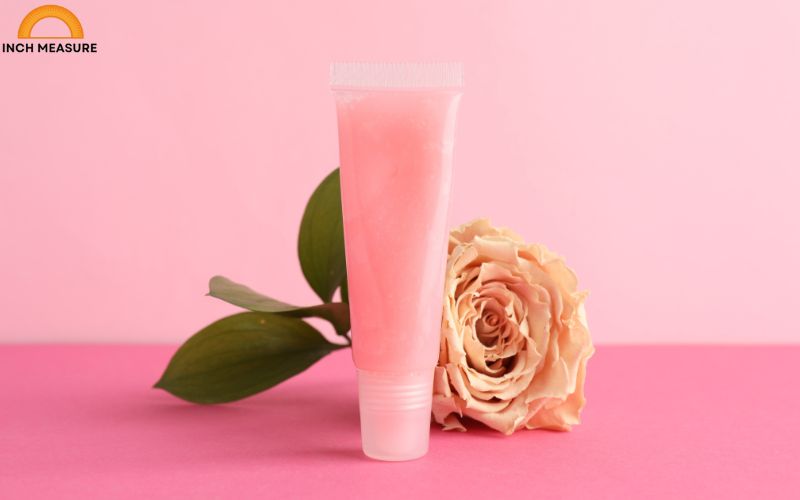
A standard lip balm tube, like those from ChapStick or Burt’s Bees, is approximately 4 cm long (excluding the cap or base), making it a great reference for this measurement.
Lip balm tubes are designed to be compact and portable, fitting easily into pockets or purses. The main body of the tube, where the balm is housed, is typically around 4 cm in length. This makes it a relatable and accessible item for visualizing 4 cm.
Lip balm is something many people use daily, especially in dry or cold weather. Its 4 cm length is ergonomic, allowing easy application while remaining small enough to carry. If you’re trying to picture 4 cm, imagine the length of a lip balm tube—it’s a size you can easily hold and visualize.
In practical applications, a lip balm tube can serve as a quick reference for small measurements, such as spacing items in a craft project or estimating the size of a small container. Its cylindrical shape also adds a tactile dimension to understanding 4 cm. Next time you apply lip balm, note the tube’s length—it’s a perfect 4 cm example.
9. A Matchstick (Length)

A standard wooden matchstick, used for lighting candles or fires, is approximately 4 cm long, making it an excellent reference for this measurement.
Matchsticks are designed to be long enough to light safely but short enough to be portable. A typical wooden matchstick measures about 4 cm, though slight variations exist depending on the type (e.g., safety matches vs. strike-anywhere matches).
Matchsticks are familiar to many, especially in households that use candles or fireplaces. Their 4 cm length is easy to visualize, as it’s a size you can hold between your fingers. If you’re trying to estimate 4 cm, imagine the length of a matchstick—it’s a simple and effective reference.
In practical use, a matchstick’s 4 cm length can help with tasks like measuring small gaps or marking distances in DIY projects. Its rigid, lightweight nature makes it a convenient tool for quick estimations. The next time you light a candle, take a look at the matchstick—it’s a classic 4 cm example.
10. A Bottle Cap (Diameter)

The diameter of a standard plastic bottle cap, like those on soda or water bottles, is often around 4 cm, making it a great reference for visualizing this size.
Bottle caps vary slightly depending on the bottle type, but many standard caps (e.g., on a 500 ml soda bottle) have a diameter of about 4 cm. This dimension is designed to seal the bottle securely while being easy to twist off.
Bottle caps are everywhere, from kitchens to recycling bins, making them a highly relatable reference. Their 4 cm diameter is easy to visualize, as it’s a size you can hold in your hand or compare to other objects. If you’re trying to picture 4 cm, imagine the width of a bottle cap—it’s a straightforward cue.
In practical scenarios, a bottle cap’s 4 cm diameter can help with tasks like measuring circular objects or spacing items in a project. Its rigid, circular shape also makes it a reliable reference for consistent measurements. Next time you open a bottle, take a moment to note the cap’s diameter—it’s a perfect 4 cm example.
Summary of 10 Everyday Items Measuring ~4 cm
| Item | Dimension | Approximate Size | Common Use |
| Paperclip (Straightened) | Length | ~4 cm | Organizing papers |
| AA Battery | Length (body) | ~4 cm | Powering devices |
| Teaspoon | Width of bowl | ~4 cm | Cooking, eating |
| USB Flash Drive | Width | ~4 cm | Data storage |
| Dice (Large) | Edge-to-edge | ~4 cm | Games, education |
| Key | Blade length | ~4 cm | Unlocking doors |
| Credit Card | Short edge | ~4 cm | Payments, ID |
| Lip Balm Tube | Length | ~4 cm | Lip care |
| Matchstick | Length | ~4 cm | Lighting fires |
| Bottle Cap | Diameter | ~4 cm | Sealing bottles |
This table summarizes the items discussed, providing a quick reference for their dimensions and uses.
Converting 4 cm to Other Systems
While the metric system is widely used, some regions, like the United States, rely on the imperial system. Converting 4 cm to other units helps broaden its applicability:
- Inches: 4 cm ≈ 1.574 inches (just over 1.5 inches).
- Feet: 4 cm ≈ 0.131 feet (a small fraction of a foot).
- Yards: 4 cm ≈ 0.0437 yards (negligible in this context).
For those more familiar with imperial units, 4 cm is roughly the length of a small segment of a ruler or about one-third the width of a standard business card. These conversions are useful in contexts like woodworking or crafting, where imperial measurements are common.
Measuring 4 cm Without a Ruler
What if you don’t have a ruler handy? You can estimate 4 cm using the items above or other methods:
- Body Parts: The width of two adult fingers (index and middle) side by side is close to 4 cm. The length of a thumb from tip to first knuckle is also a good approximation.
- Paper Folding: A standard A4 sheet (29.7 cm × 21 cm) can be folded to approximate 4 cm. For example, folding the short edge into fifths gives segments of about 4.2 cm.
- Coins: Stacking two U.S. quarters (2.4 cm diameter each) gives a total close to 4 cm.
These methods are practical for quick estimations in everyday scenarios, like measuring fabric or spacing objects.
The Significance of 4 cm in Science and Technology
In scientific and technical fields, 4 cm is a meaningful size:
- Biology: A 4 cm specimen, like a leaf or small organism, is large enough for detailed study but small enough to fit under a microscope slide.
- Physics: In wave studies, 4 cm could represent a wavelength in certain experiments, such as microwave demonstrations.
- Engineering: Components like screws, bolts, or circuit board elements are often around 4 cm for functionality and compactness.
These applications highlight the versatility of 4 cm as a measurement that’s both precise and practical.
Cultural Perspectives on 4 cm
Interestingly, the perception of 4 cm can vary culturally. In countries using the metric system, like most of Europe and Asia, 4 cm is a familiar and intuitive measurement. In the U.S., where inches dominate, 4 cm might seem less intuitive, requiring conversion to ~1.6 inches. This difference underscores the importance of providing relatable examples, like the everyday items above, to bridge cultural measurement gaps.
You May Also Need To Know: How Long is 18 Inches
Conclusion
Understanding how big 4 cm is requires more than just numbers—it demands context, comparisons, and real-world examples. From the straightened length of a paperclip to the diameter of a bottle cap, 4 cm is a measurement that appears in countless everyday objects, making it both practical and relatable. Whether you’re measuring a small component, estimating a length without a ruler, or simply curious about the metric system, visualizing 4 cm through familiar items brings clarity to this small but significant dimension.
Convert Inches to Meters, cm, mm, and Feet
Converted Values:
Meters (m): 1.016
Centimeters (cm): 101.60
Millimeters (mm): 1016.00
Feet (ft): 3.33



